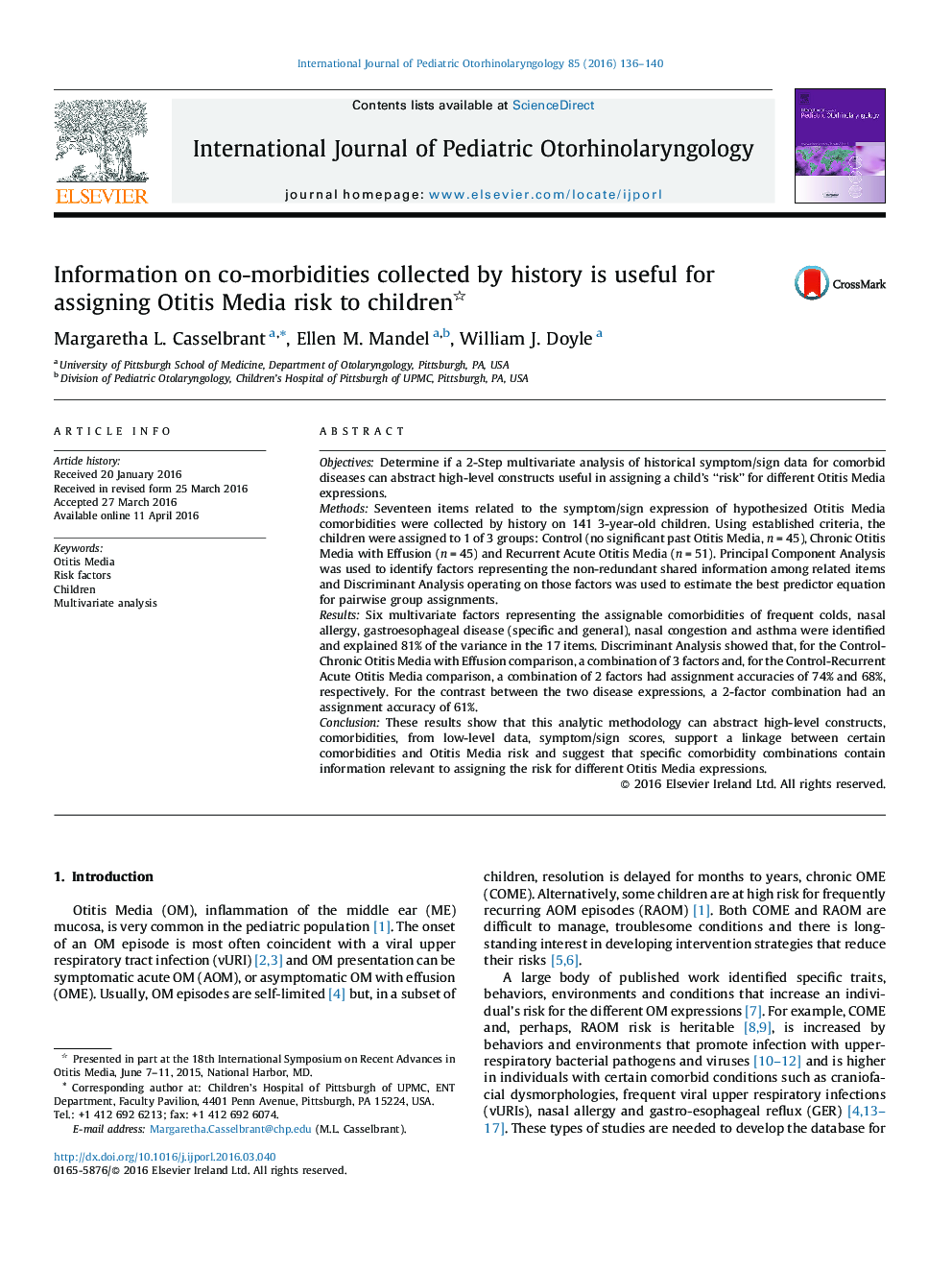| Article ID | Journal | Published Year | Pages | File Type |
|---|---|---|---|---|
| 6213143 | International Journal of Pediatric Otorhinolaryngology | 2016 | 5 Pages |
ObjectivesDetermine if a 2-Step multivariate analysis of historical symptom/sign data for comorbid diseases can abstract high-level constructs useful in assigning a child's “risk” for different Otitis Media expressions.MethodsSeventeen items related to the symptom/sign expression of hypothesized Otitis Media comorbidities were collected by history on 141 3-year-old children. Using established criteria, the children were assigned to 1 of 3 groups: Control (no significant past Otitis Media, n = 45), Chronic Otitis Media with Effusion (n = 45) and Recurrent Acute Otitis Media (n = 51). Principal Component Analysis was used to identify factors representing the non-redundant shared information among related items and Discriminant Analysis operating on those factors was used to estimate the best predictor equation for pairwise group assignments.ResultsSix multivariate factors representing the assignable comorbidities of frequent colds, nasal allergy, gastroesophageal disease (specific and general), nasal congestion and asthma were identified and explained 81% of the variance in the 17 items. Discriminant Analysis showed that, for the Control-Chronic Otitis Media with Effusion comparison, a combination of 3 factors and, for the Control-Recurrent Acute Otitis Media comparison, a combination of 2 factors had assignment accuracies of 74% and 68%, respectively. For the contrast between the two disease expressions, a 2-factor combination had an assignment accuracy of 61%.ConclusionThese results show that this analytic methodology can abstract high-level constructs, comorbidities, from low-level data, symptom/sign scores, support a linkage between certain comorbidities and Otitis Media risk and suggest that specific comorbidity combinations contain information relevant to assigning the risk for different Otitis Media expressions.
